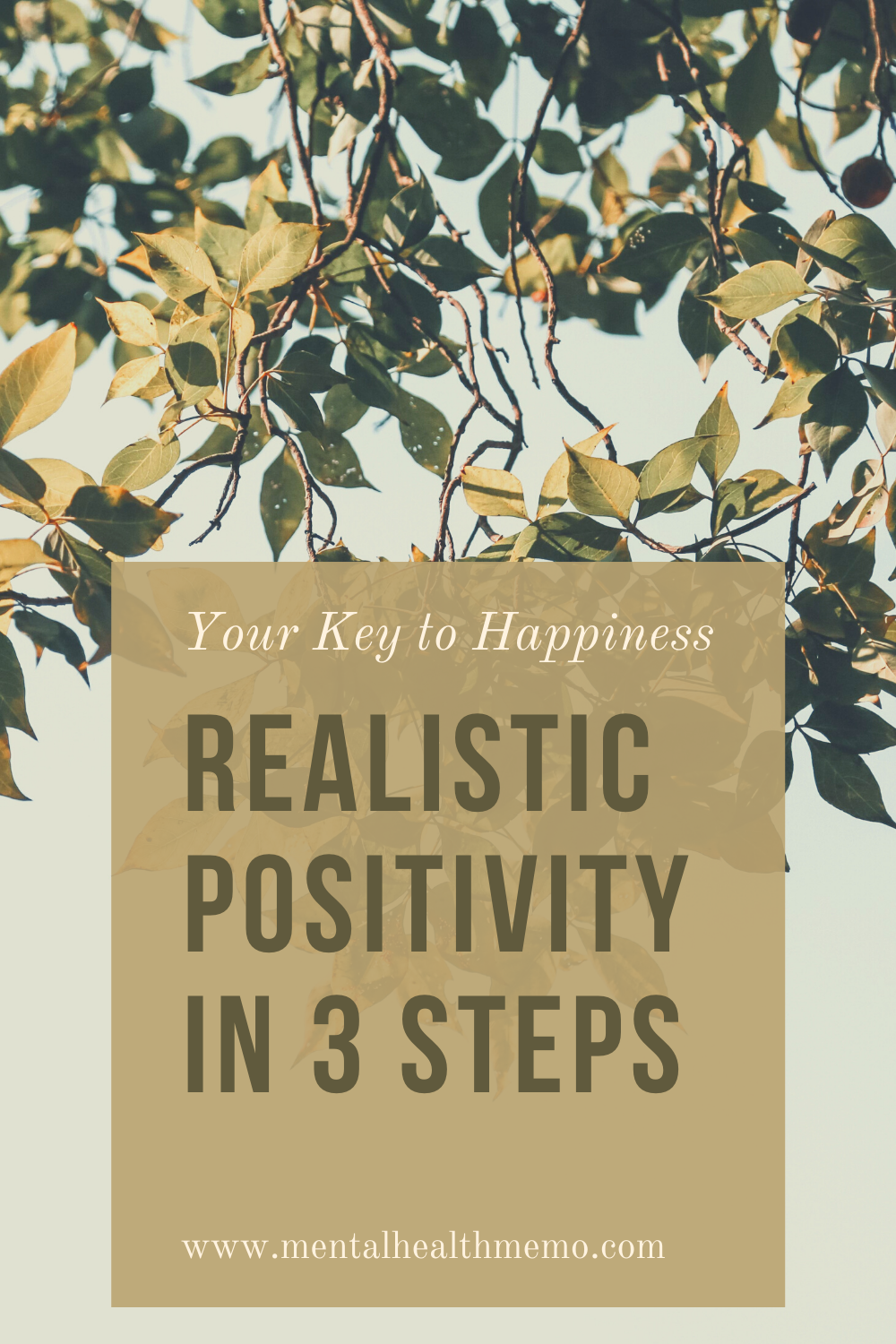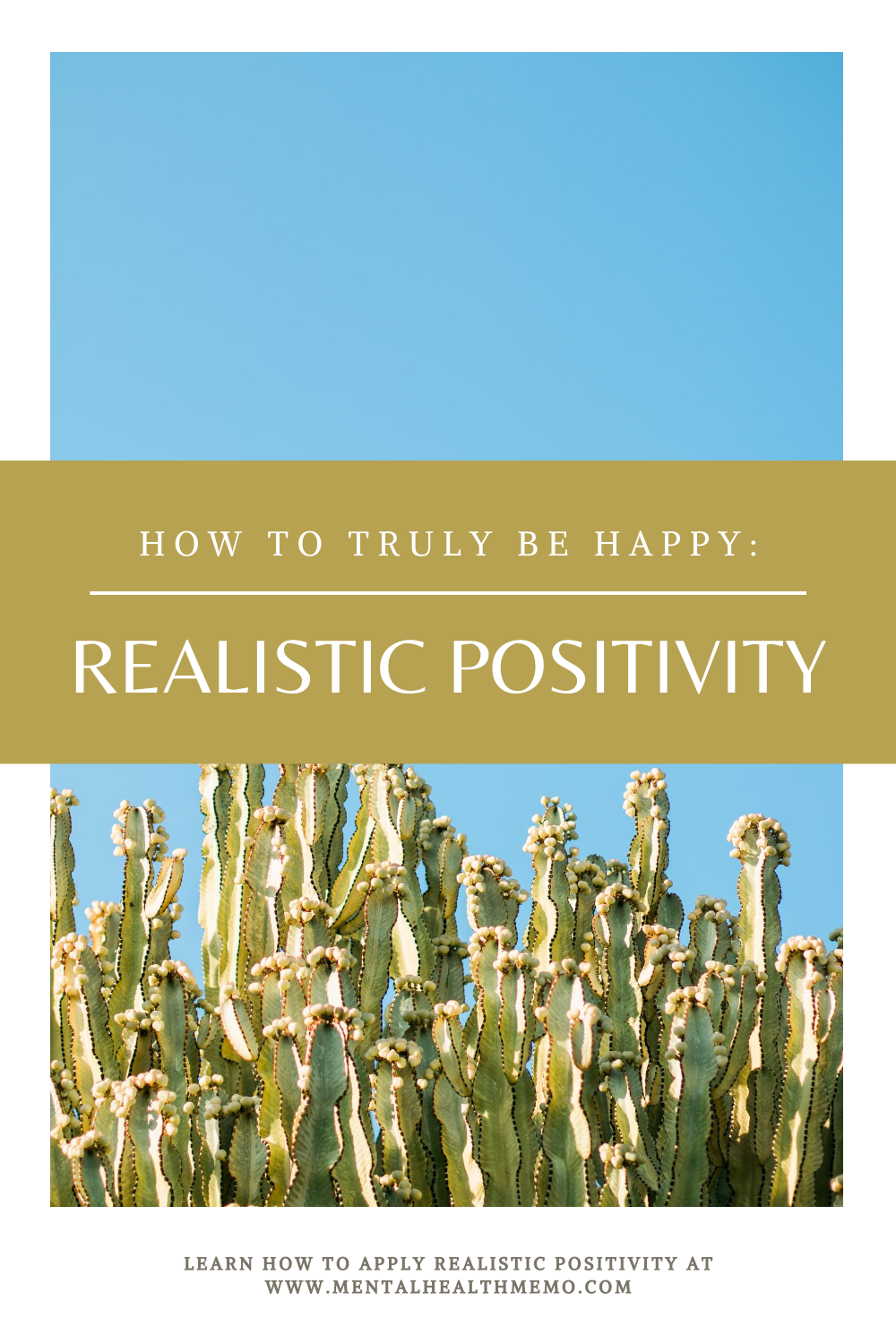Table of Contents
What is Realistic Positivity?
Realistic positivity is a mindset and an approach one uses to address issues that may arise in one’s life.
As the name suggests, it’s REALISTIC positivity rather than regular positivity.
The difference between them is that regular positivity is often unobtainable and unrealistic because it boasts a narrative of always looking on the bright side, always being happy, and always being in a good mood.
This mindset is so toxic because it’s HEALTHY for us to be pessimistic, sad, angry, unhappy, and in sour moods. It would be unhealthy and ABNORMAL to always be in a positive mindset.
Our negative mindsets can help protect us and they can be the correct response in certain scenarios. For example, if someone stole my bag, the normal response would be to get upset!
This feeling of being upset will then lead me to be smarter about where I leave my bag next time. If I was to smile and say “oh well”, then I’ll be just as careless next time.
On top of that, if you actually think you need to be happy all the time then inevitably get mad or sad (which again, is NORMAL), you’re going to feel incredibly guilty and incompetent. Thus you’ll end up even more depressed!
That’s why I’m not a big fan of the whole positivity movement that gets shoved down our throats by media and other content creators. Of course, we want to strive for being happy and our best selves, but expecting it to be that way all the time is problematic.
So instead, realistic positivity is about seeing the good and the bad and finding a middle ground that is obtainable. This will make more sense as you follow along with this article and the example I have provided.

My Introduction to Realistic Positivity
I was first introduced to the idea of realistic positivity when I was going through therapy.
My Social Worker called me out on the fact that I think in extremes. Either “This is going to suck and I can’t do it” or “This is perfect and nobody can tell me otherwise”.
Neither of these thinking methods were realistic or helpful to me.
If I thought on the extreme end of negativity, I would deprive myself of experiences. On the opposite end, if I thought overly positive of something I would often be let down.
This type of thinking helped enable my anxiety and depression by letting extreme opinions of myself and things around me take over.
*Important example that is used in the rest of the post*:
One example of realistic positivity I like to use is when I told my Social Worker there is was no way I could travel. I was certain that I would have a full-blown panic attack and I’d just explode on the plane. If I didn’t explode on the plane, I would explode in whatever place I was in.
Pretty dramatic, I know.
So we had to work through the logistics of the situation and try to bring me to a place of realistic positivity instead.
I’m going to do the same with you using my specific example so that you can understand how to apply this into your own life.
1. Understanding Why
First, we had to understand why I thought what I did. Why did I think I was going to have a panic attack and explode?
Well, traveling is a huge trigger for me as I’m claustrophobic and I get anxious when going far away from home. Flying in a plane is all of that combined into one.
On top of that, I have a history of those types of situations causing me to have panic attacks.
Because it’s such a clear anxiety-inducing situation, I can assume that I’ll likely have a terrible “Oh my god I’m dying” panic attack.
So clearly there were precise reasons for why I thought this would happen. It wasn’t necessarily out of reach or delusional to have thought what I did.
If there is no concrete reason for why you think something is going to happen, that’s a really big red flag. Going through all these steps will be particularly vital for you if that is the case.
2. The Logistics
Once we knew why I thought that way, we could address logistics and try to get a more rounded opinion on the situation.
Examples of questions my Social Worker asked:
Is it absolutely certain that you’ll have a panic attack? No. There have been times where I was anxious but I didn’t have an actual panic attack.
Do you have coping strategies for your panic attacks? Yes. I’ll have distractions and my medication.
Have you felt like this before and survived? Yes. I’ve had lots of panic attacks where I felt like it was the end of the world but it never was.
Can you die from a panic attack? No. Nobody has ever died from a panic attack. As much as I think I’ll be the exception to that fact, I won’t be.
What do you gain from going? I get to see a close friend and see a foreign place I’ve always wanted to visit.
Is there an alternative to flying? No there isn’t.
Obviously, these are specific for my example and the questions you’ll have to ask yourself will be different. The point is that you thoroughly question every piece of your belief and how legitimate it is.
This will ideally help you see how disordered your thinking about the situation is.
All of these steps equally apply to someone that has an overly positive belief on something. Being continuously let down is just as bad as limiting yourself by being extremely negative.
3. Meeting in The Middle
Now, this is the magic moment and the most important part of practicing realistic positivity:
Meeting your belief in the middle.
This means taking into account the realistic negative about the situation but also knowing the positives, the gains, and the solutions to the problem.
For example in my situation, I came to the middle ground of:
“I’m going to be doing something that will likely trigger a horrible panic attack and make me suffer. BUT it’s not guaranteed that I’ll have a panic attack. I also have coping strategies to get me through it if it does happen. I need to do this to get over my anxiety with flying so I can see the world like I want to.”
So, I’m acknowledging the reality that I am going to be put in an anxiety-inducing situation and so it’s very likely that I’ll have a panic attack.
But I’m not letting the negativity win by reminding myself that I know how to cope with such a circumstance and that I’ll make it out alive.
On top of that, it’s something that I need to do, and the reward will be well worth it.
This is realistic positivity.

I’ve used a very specific example for the purpose of better explaining realistic positivity to you, but this can really look like anything:
“I’m not ready for tomorrow’s test because I didn’t study, but I’m still going to show up and do my best and will learn from this experience that I need better time management skills.”
“I’ve had a lot of terrible relationships in the past so I acknowledge that I am apprehensive about starting a new one because of this trauma, but if it falls apart I know how to take care of myself and reach out for help after”.
“I acknowledge that I’m being overly optimistic about this one person and only seeing their good traits because I attach easily, so I’m going to try to not let things slip anymore by doing x,y,z”.
As long as you follow the general formula, you should arrive at some version of this type of middle ground.
If you think there is no balanced middle, you need to keep asking yourself those logistics questions because you can always swing a situation around to be as middle ground as possible.

The Benefits
Realistic positivity is not about “Everything will be sunshine and flowers” but rather “This is going to be tough but I’ll make it work”.
I think that’s a much better way to see yourself and the world because it helps keep you grounded, and prevents you from hurting yourself with unrealistic expectations.
On top of that, overly optimistic positivity can make you feel guilty if you can’t be happy all the time. Which is not possible or good either way. Sometimes we need to be negative to help preserve ourselves and to enjoy the good moments more.
As humans, we weren’t wired to always be positive and happy so we shouldn’t force that type of mentality. It’s draining and unhelpful.
Instead, be realistic about both the good and bad so that you’re ready for whatever the situation calls for.
After continuously practicing this type of mindset, I’ve found myself to be so much less stressed about anxiety-inducing situations.
I’ve also become less disappointed with things and myself and find it much easier to let whatever it is go.
I hope this approach can help you too so that you can overcome any situation with grace and perseverance.
All my love,
T


thank you very much first of all.wonderful article.i learned much from this.
I’m so glad you found this helpful 🙂